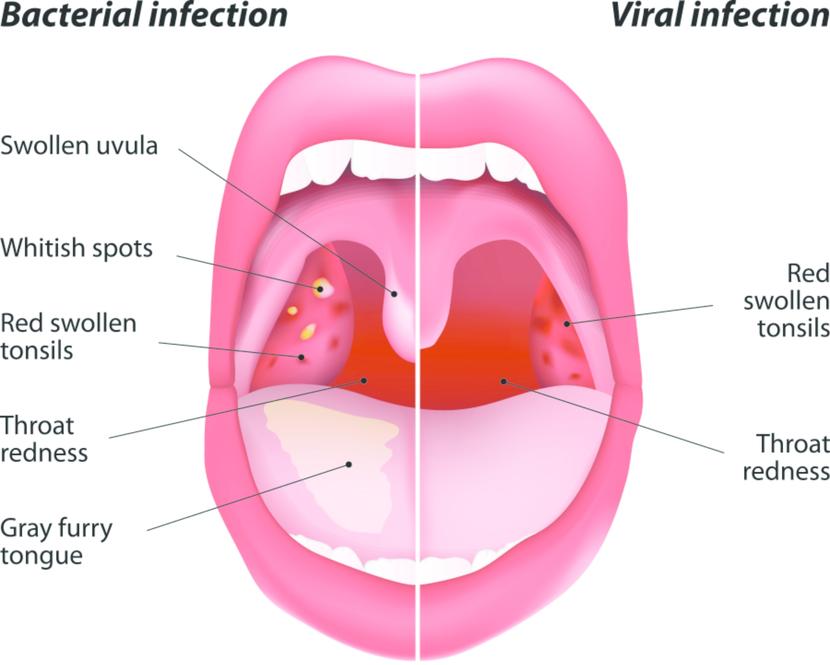Battling The Throat Bully - What's Happening Inside
Have you ever woken up, perhaps in the morning, and felt that familiar scratchy, rather rough feeling at the back of your mouth? That sensation, a bit like swallowing tiny shards of glass, is often the first sign that something is not quite right. It's almost as if an unwelcome guest has moved in, making itself very comfortable in a place where you usually expect smooth sailing. We're talking, you know, about what many of us think of as "the throat bully" – that uncomfortable feeling that just won't seem to leave your neck alone.
This particular bully, you see, can make everyday things, like having a chat or simply taking a sip of water, feel like a real challenge. It's a common experience, so many people have dealt with this kind of annoyance. It pops up, sometimes, when you least expect it, turning a perfectly good day into one filled with slight discomfort. This part of your body, the throat, is usually so quiet, doing its important work without much fuss, but when the bully shows up, it really makes its presence known, doesn't it?
It’s important, then, to get a better sense of what this area of your body actually does and what might be going on when that bully decides to make an appearance. After all, knowing a little more about the space where this discomfort lives can help you understand what might be causing the trouble. We'll look at what your throat is usually up to, and then, you know, why it sometimes feels so very unhappy.
- Haunted House Video Twitter
- Adil Raja Twitter
- Sam Mckewon Twitter
- Hbomberguy Twitter
- Liz Harrington Twitter
Table of Contents
- What Is The Throat, Really?
- How Does The Throat Bully Make Its Presence Known?
- What Are The Different Faces Of The Throat Bully?
- Which Parts Of Your Body Does The Throat Bully Affect?
- What Is The Pharynx, And Why Is It So Important To The Throat Bully?
- What Does A Happy Throat Look Like?
- When Should You Pay Attention To The Throat Bully?
- How Can We Support Our Throats Against The Throat Bully?
What Is The Throat, Really?
Your throat, that part right at the front of your neck, sits, you know, just inside, sort of in front of your spine. It's a rather busy place, actually. It's not just an empty tube; it holds a few really important pieces that help you do things like talk, breathe, and swallow your food. Think of it, in a way, as a central station for air and meals.
Inside this area, you'll find a couple of key players. There's the pharynx, which is like the main passageway, and the larynx, often called your voice box. These two work together, pretty much constantly, to make sure everything goes where it needs to. A small, but very important, flap of tissue also lives here; it's called the epiglottis. This little piece of tissue acts like a guard, making sure food and drink go down the right tube and not into your breathing passages. It's quite a clever design, really.
So, when you think about your throat, it's more than just a feeling. It's a complex structure, rather vital for daily life. It helps you take in air, and it helps you get your food down to your stomach. It's almost like a carefully orchestrated system, with each part having a specific job. And when that system is running smoothly, you hardly even notice it, which is, you know, a sign of a job well done.
- Buffpup Face Reveal
- Pollwatch Twitter
- Shannon Drayer Twitter
- Ghfan10130 Twitter
- Leaked Tiktokers Twitter
How Does The Throat Bully Make Its Presence Known?
When the throat bully shows up, it typically brings with it a feeling that is, well, not very pleasant. Most people describe it as a sort of hurt, or a dry sensation, or even a rough, scratchy feeling right there in the throat. It's the kind of feeling that makes you want to clear your throat, or maybe even just whisper instead of talking out loud. This discomfort can range from just a slight irritation to something that really, really makes you wince with each swallow.
This uncomfortable feeling is, in fact, quite common. Many of us have experienced it at some point, perhaps after a long day of talking, or maybe when the seasons change. It's often, you know, a sign that something is irritating the delicate lining of your throat. It could be something simple, or it could be a sign of something a bit more involved. The bully, in this case, is just telling you that it's there and causing a bit of a fuss.
Sometimes, this feeling is just a temporary thing, something that passes quickly. Other times, though, it can linger, making you wonder what exactly is going on inside. It's like a little alarm bell, telling you to pay attention to that part of your body. And often, the cause of this particular type of discomfort is, you know, something that can be handled fairly easily, but it's still good to know what's going on.
What Are The Different Faces Of The Throat Bully?
The throat bully, as it turns out, has a few different ways it likes to show up, depending on which specific part of your throat is feeling the most upset. It's not just one general problem; there are, in fact, distinct types of these sore sensations. Each type tends to affect a slightly different area, which can help explain why sometimes your discomfort feels one way, and other times it feels, well, a bit different.
One common way the throat bully appears is as pharyngitis. This is when the main part of your throat, the pharynx, gets all inflamed and unhappy. Then there's tonsillitis, which, as you might guess, means your tonsils are feeling the brunt of the bully's attention. These are those two little lumps of tissue at the back of your throat, and when they swell up, it can be quite uncomfortable, really. And finally, there's laryngitis, which focuses its unwelcome attention on your voice box, or larynx. When this happens, your voice can become hoarse, or you might even lose it completely, which is, you know, quite a bother.
So, while they all fall under the general umbrella of a "sore throat," knowing which specific area is being targeted by the throat bully can sometimes give you a better idea of what might be causing the issue. It's like knowing which room in the house the problem is in, rather than just knowing there's a problem in the house. This distinction is, in some respects, quite helpful for figuring things out.
Which Parts Of Your Body Does The Throat Bully Affect?
When the throat bully decides to pay a visit, it doesn't just affect one tiny spot. Your throat, you see, is a rather intricate setup, made up of several important pieces that all work together. So, when one part is feeling the pressure, it can sometimes feel like the whole area is involved. It's a bit like a team; if one player is struggling, the whole team feels it, more or less.
The parts that can be caught in the crossfire when the throat bully is active include your esophagus, which is the tube that carries food down to your stomach. There's also the trachea, which is your windpipe, allowing air to get to your lungs. Your larynx, as we mentioned, the voice box, is also part of this area. And those tonsils, those small, round pieces of tissue at the back of your mouth, are very much a part of the throat's defenses, and thus, can be affected.
And let's not forget the epiglottis, that clever little flap that protects your windpipe from food. All these pieces are, in fact, nestled together in your neck, forming a crucial pathway for both air and whatever you eat or drink. So, when the throat bully makes its presence felt, it’s really impacting a whole network of important bodily structures, which is why the discomfort can spread and feel so encompassing, you know?
What Is The Pharynx, And Why Is It So Important To The Throat Bully?
The pharynx, often simply called the throat, is, you know, a muscular tube that runs right through the middle of your neck. It's a pretty central player in a lot of what your head and body do. This tube isn't just for show; it's got a couple of really big jobs that are essential for keeping you going. It helps you breathe, for one, and it also helps you get your food down. So, it's doing double duty, more or less, all the time.
You can, in fact, give a lot of credit to your pharynx for your ability to take in air and for the way you swallow your meals. It's located right behind your nose and your mouth, acting as a connector. It links your mouth, that oral cavity, to the rest of the system that takes food to your stomach. And it also links your nasal passages to the breathing tubes that go down to your lungs. It's a kind of crossroads, you might say, for everything that goes in or out of your head.
Because it's such a central hub, the pharynx is often the first place the throat bully decides to set up shop. When you feel that general soreness, that scratchy feeling, it's very often this muscular tube that is feeling the most irritated. It's like the main highway that gets all the traffic, so if there's a problem, it tends to show up there first. This makes it, you know, a very important part to think about when you're dealing with throat discomfort.
What Does A Happy Throat Look Like?
When your throat is feeling good, when it's not being bothered by the throat bully, it's a smooth operator, really. It’s a clear passage, allowing air to move freely into your lungs and food to slide down to your stomach without any fuss. This passageway, from your mouth all the way down, includes those parts we talked about: the pharynx, the esophagus, the larynx, and the trachea. They all work together in a quiet, efficient way.
Just like the inside of your nose and mouth, the throat has a special lining. It's called a mucous membrane. This lining is, in fact, pretty important for keeping things moist and for catching tiny bits of dust or other things that shouldn't go further into your body. When this membrane is healthy, it's smooth and usually a nice, soft pink color. It's like the inside of a well-maintained pipe, allowing everything to flow without any blockages or rough spots.
A happy throat means you can talk without effort, swallow your favorite foods with ease, and breathe deeply without any feeling of scratchiness or pain. It’s a part of your body that, when it's working well, you hardly even notice it. And that, you know, is exactly how it should be. It’s doing its vital work behind the scenes, allowing you to go about your day without thinking twice about it.
When Should You Pay Attention To The Throat Bully?
You've probably, more or less, had a sore throat at some point in your life. It's a very common experience, and often, the reason for it is something like a simple viral infection, like a common cold. These kinds of sore throats tend to go away on their own after a few days, and you just need to give your body a little time to sort things out. But sometimes, the throat bully might be a sign of something a bit more, you know, worth looking into.
Other things can cause that painful feeling, too. Allergies, for instance, can make your throat feel scratchy and irritated. Or, sometimes, it could be a bacterial infection, like strep throat, which is a different kind of problem altogether and often needs a different kind of help. So, while many sore throats are just a temporary nuisance, it’s good to be aware that there are other reasons they might pop up.
It's helpful to know when your throat discomfort might need a closer look. If your sore throat lasts longer than a few days, or if it comes with other things like a very high temperature, trouble swallowing, or a rash, then it's a good idea to, you know, get some advice. Paying attention to these signs can help you understand when the throat bully is just a passing annoyance and when it might be signaling something that needs a bit more care. It's about listening to what your body is telling you, essentially.
How Can We Support Our Throats Against The Throat Bully?
Supporting your throat, especially when the throat bully is trying to make trouble, involves a few simple things that can make a big difference. Keeping your throat moist is, you know, pretty important. Drinking plenty of fluids, like water or warm teas, can help soothe that scratchy feeling and keep the mucous membrane working well. It's like giving your throat a nice, gentle bath from the inside.
Resting your voice, if your throat is feeling particularly raw, can also be very helpful. Just like any other part of your body that's feeling overworked, your voice box needs a break to recover. Avoiding things that might irritate your throat further, like very dry air or smoke, is also a good idea. These things can make the throat bully's job much easier, so it’s best to steer clear, if you can.
And remember, your body has an amazing ability to heal itself, so giving it the right conditions is key. Sometimes, a little bit of patience and some gentle care are all that's needed to send that throat bully packing. It’s about being kind to your body and giving it what it needs to get back to its normal, quiet, and efficient self, which is, you know, what we all want for our throats.

Sore Throat: Symptoms, Causes, Treatment, and Diagnosis | FindATopDoc

Strep Throat: Symptoms and 15 Natural Support Strategies

Throat Conditions | Wandzel ENT